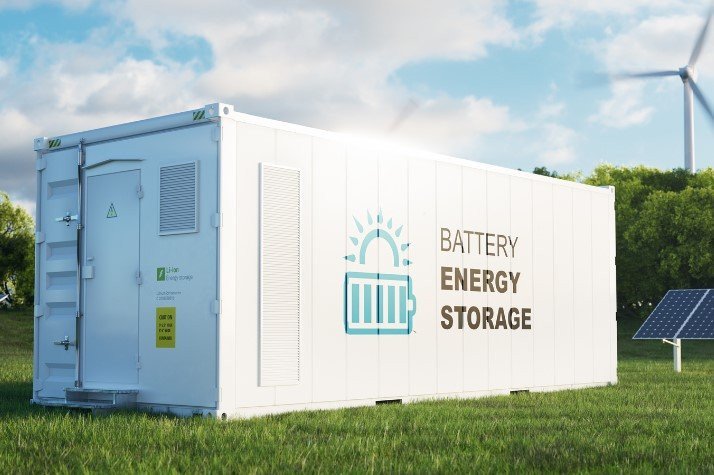Building a Robust Indian Grid: The Vital Role of PV Inverter FRT Capability
India is on a mission to combat climate change and achieve Sustainable Development Goals by leveraging renewable energy sources for meeting its national energy needs. As per the Nationally Determined Contribution (NDC), the country's climate action plan (updated in August 2022) India targets sourcing 50% of its total power needs from renewable energy sources by 2030. India's geographical location makes it an ideal destination for solar power generation. The country receives abundant sunlight throughout the year across all the major regions in the country. This has driven the market for solar energy generation leading to a substantial integration of inverter-based generating resources (IBRs) into India's power grid.
Solar inverters play an ever more critical role in maintaining grid stability. The inverters are one of the most crucial components in the solar plants and assist the plants with a range of future-proof and upgradable capabilities to comply with the stability needs. One central feature of these inverters is their fault ride-through capability, which includes Low Voltage Ride-Through (LVRT) and High Voltage Ride-Through (HVRT). These capabilities enable the solar inverters to overcome stability challenges and ensure smooth operation even in the presence of faults.
Let's take a closer look at how the fault ride-through capabilities of the inverters play a key role in overcoming stability challenges, India's regulatory framework, technological advancements, and other related aspects in a large-scale solar plant.
Importance of PV inverter Fault Ride-Through Capability
In regions with significant renewable energy (RE) penetration, it is imperative that IBRs continue feeding power into the electrical grid through momentary instabilities to avoid loss of generation. The capability to ride through the disturbance is attained through inverter response, and without it, other systems would be forced to shut off until normal grid conditions return. Allowing solar inverters to remain operational during disruptions ensures grid stability and reliability and helps avoid potential power outages or grid instability.
The Regulatory Environment in India
The Central Electricity Authority (CEA) is the governing body in India that mandates the ride-through capabilities of solar inverters through the Technical Standards for Connectivity to the Grid. These serve as well-defined regulations that outline the performance requirements of solar inverters with an aim to enhance grid resilience. With the rapid proliferation of renewable energy sources and anticipation of a sharp uptick in capacity building, periodic amendments to the regulations will keep taking place in sync with the evolution of grid challenges or needs.
Stability Challenges in India
Recent stability Issues in RE complexes in India have been acknowledged by the Central Electricity Authority of India (CEA) in the Compliance of CEA Regulations by RE Developers. Stability events in the grid are starting in India as the RE penetration level goes up. There were 28 incidents and more than 1000 MW loss since January 2022, due to the events like overvoltage during the switching operation, frequency oscillations, and faults in the vicinity of the RE complexes. The analysis also revealed one of the main reasons to be the inadequate reactive support by RE plants which points to the inability of the inverters in the plants to adequately support the grid during such grid events and fault scenarios.
Managing Current and Future Mandates
Investigations to assess the compliance of large-scale inverter fleets installed over the past decade with the ride-through capability demands of 2023 identified that some of these inverter models were initially designed and tested in accordance with the CEA (Technical Standards for Connectivity to the Grid) Amendment Regulations 2013 for grid compliance. The inverters with extended capabilities successfully met the latest compliance standards by adjusting their parameters without modifying their hardware or software. This proved advantageous for both the plant owners and the grid operators. However, inverters with insufficient capabilities faced difficulties in demonstrating compliance at the plant level, requiring plant owners to make additional investments to adhere to the compliance requirements.
This signifies why the inverters need the extended capability to support not just the current ride-through scenarios but also the scenarios that future grid codes may demand. Few of the renowned solar inverter manufacturers internationally have demonstrated their commitment to complying with the existing as well as future mandates as per the regulatory framework in India. Their inverters deployed in the past decade are equipped with extended ride-through capabilities that are compliant with the existing grid codes. Through parameter adjustments, they ensure seamless integration of their inverters in a way that benefits both the plant owners and the grid operators.
Benchmarking the Most Challenging Ride-Through Conditions Prevailing in Other Markets
Meeting the fault ride-through requirements specified by the Australian Energy Market Operator (AEMO) poses significant challenges for inverters with limited capabilities. These requirements demand that inverters assist power plants during disturbances by supplying a reactive current of up to 100% in about 20 milliseconds in the event of a fault. Additionally, they must swiftly restore the system to its pre-fault state as fast as one hundred milliseconds once the fault is resolved.
Factors Beyond the Inverter Capability for Large-scale PV Plants
The fault ride-through capability is crucial at the inverter level, but the compliance required is at the plant level. To ensure the same, there are other factors that are important for compliance in large-scale PV plants in India. For instance, plant architecture is of key importance. Centralized plants have an advantage over decentralized ones. Large-scale PV plants with a central architecture, with inverters near the transformer or point of interconnection (POI), can strictly adhere to ride-through requirements at the plant level. In decentralized plants, the string inverters are spread over a considerable distance, this makes aggregating their response at the point of interconnection quite challenging, resulting in sub-optimal compliance. Which is why plant owners must invest in additional measures, such as reactive power compensation at the plant level, to ensure overall system compliance and resilience.
Conclusion
Ride-through capability is an example of how inverters can support the grid and comply with evolving grid codes. PV inverter fault ride-through capabilities are necessary for ensuring grid stability in the renewable energy landscape in India. The national regulatory framework, combined with the approach taken by inverter manufacturers to meet all current and future mandates, is testimony to the importance of this capability. By overcoming challenges specific to Indian needs and adapting to diverse grid conditions, these inverters offer reliable performance during ride-through instances. By considering factors that are beyond the inverter capability, such as the plant architecture, India will be able to boost compliance in large-scale PV plants and build a safe and stable electrical grid network.
Disclaimer: The views and opinions expressed in this article are solely those of the author and do not necessarily reflect the official policy, position, or beliefs of the website and its affiliates.

















